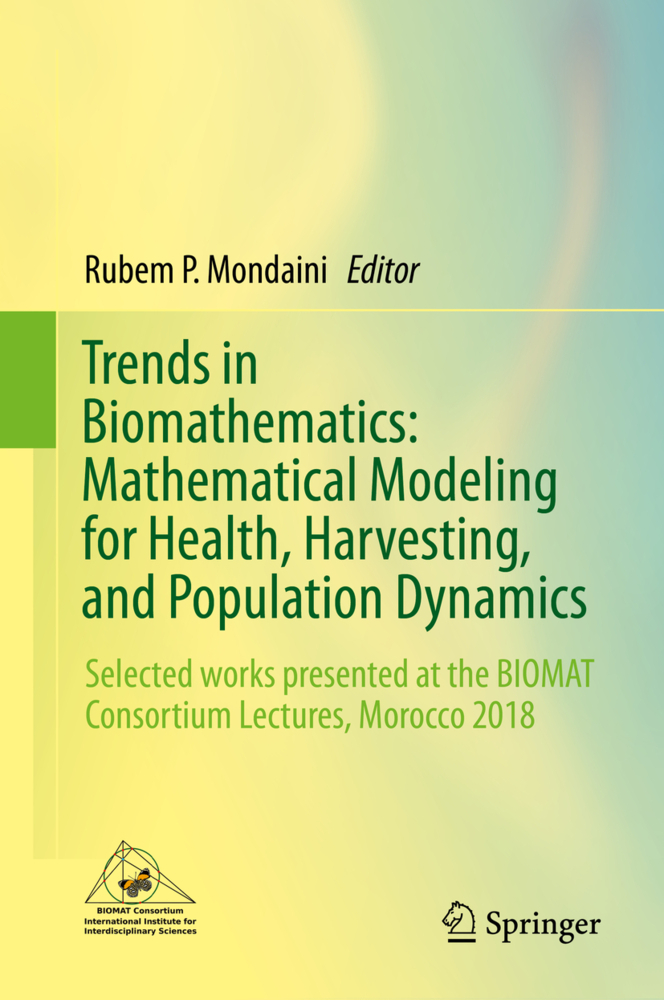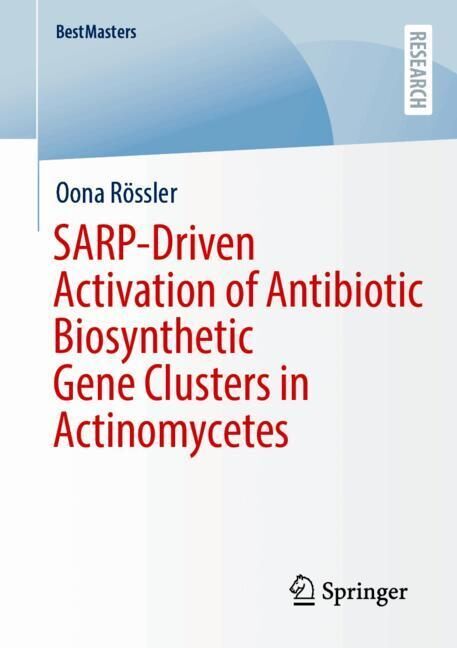Trends in Biomathematics: Mathematical Modeling for Health, Harvesting, and Population Dynamics
Selected works presented at the BIOMAT Consortium Lectures, Morocco 2018
Trends in Biomathematics: Mathematical Modeling for Health, Harvesting, and Population Dynamics
Selected works presented at the BIOMAT Consortium Lectures, Morocco 2018
This volume offers a collection of carefully selected, peer-reviewed papers presented at the BIOMAT 2018 International Symposium, which was held at the University Hassan II, Morocco, from October 29th to November 2nd, 2018. The topics covered include applications of mathematical modeling in hepatitis B, HIV and Chikungunya infections; tumor cell dynamics; inflammatory processes; chemotherapeutic drug effects; and population dynamics. Also discussing the application of techniques like the generalized stochastic Milevsky-Promislov model, numerical simulations and convergence of discrete and continuous models, it is an invaluable resource on interdisciplinary research in mathematical biology for students, researchers, and professionals.
Held every year since 2001, the BIOMAT International Symposium gathers together, in a single conference, researchers from Mathematics, Physics, Biology, and affine fields to promote the interdisciplinary exchange of results, ideasand techniques, promoting truly international cooperation for problem discussion. The 2018 edition of BIOMAT International Symposium received contributions by authors from seventeen countries: Algeria, Brazil, Cameroon, Canada, Chad, Colombia, France, Germany, Hungary, Italy, Mali, Morocco, Nigeria, Poland, Portugal, Russia, and Senegal. Selected papers presented at the 2017 edition of this Symposium were also published by Springer, in the volume "Trends in Biomathematics: Modeling, Optimization and Computational Problems" (978-3-319-91091-8).
Dynamics of a generalized model for Ebola virus disease
Bifurcations in a mathematical model for study of the human population and natural resource exploitation
Mathematical analysis of the dynamics of HIV infection with CTL immune response and cure rate
Qualitative analysis of a PDE model of Telomere loss in a proliferating cell population in the light of suns and stars
The threshold of a stochastic SiQR epidemic model with Lvy jumps
Global dynamics of a generalized Chikungunya virus
Differential game model for sustainability of multi-fishery
Towards a thermostatistics of the evolution of protein domains through the formation of Families and Clans
Analysis of Tumor/Effector cell dynamics and decision support in therapy
Optimal control of an HIV infection model with logistic growth, CTL immune response and infected cells in eclipse phase
Khinchin-Shannon generalized inequalities for non-additive entropy measures
Application of the Markov chains in the prediction of the mortality rates in the generalized stochastic Milevsky-Promislov model
Modelling the role of vector transmission of Aphid Bacterial Endosymbionts and the protection against parasitoid wasps
The incorporation of fractal kinetics in the PK modeling of chemotherapeutic drugs with non-linear concentration time profiles
Mathematical modeling of inflammatory processes
Modeling the memory and adaptive immunity in viral infection
Optimal temporary vaccination strategies for epidemic outbreaks
On the reproduction number of epidemics with sub-exponential growth
Numerical simulations for cardiac electrophysiology problems
Hopf bifurcations in a delayed herd harvesting model and herbivory optimization hypothesis
A fractional order model for HBV infection with capsids and cure rate
Modelling anaerobic digestion using stochastic approaches
Alzheimer disease: Convergence result from a discrete Model towards a continuous one.
Held every year since 2001, the BIOMAT International Symposium gathers together, in a single conference, researchers from Mathematics, Physics, Biology, and affine fields to promote the interdisciplinary exchange of results, ideasand techniques, promoting truly international cooperation for problem discussion. The 2018 edition of BIOMAT International Symposium received contributions by authors from seventeen countries: Algeria, Brazil, Cameroon, Canada, Chad, Colombia, France, Germany, Hungary, Italy, Mali, Morocco, Nigeria, Poland, Portugal, Russia, and Senegal. Selected papers presented at the 2017 edition of this Symposium were also published by Springer, in the volume "Trends in Biomathematics: Modeling, Optimization and Computational Problems" (978-3-319-91091-8).
Mathematical modeling of Thrombin generation and wave propagation: From simple to complex models and backwards
Optimal control of delayed Hepatitis B viral infection model with DNA-Containing capsids and cure rateDynamics of a generalized model for Ebola virus disease
Bifurcations in a mathematical model for study of the human population and natural resource exploitation
Mathematical analysis of the dynamics of HIV infection with CTL immune response and cure rate
Qualitative analysis of a PDE model of Telomere loss in a proliferating cell population in the light of suns and stars
The threshold of a stochastic SiQR epidemic model with Lvy jumps
Global dynamics of a generalized Chikungunya virus
Differential game model for sustainability of multi-fishery
Towards a thermostatistics of the evolution of protein domains through the formation of Families and Clans
Analysis of Tumor/Effector cell dynamics and decision support in therapy
Optimal control of an HIV infection model with logistic growth, CTL immune response and infected cells in eclipse phase
Khinchin-Shannon generalized inequalities for non-additive entropy measures
Application of the Markov chains in the prediction of the mortality rates in the generalized stochastic Milevsky-Promislov model
Modelling the role of vector transmission of Aphid Bacterial Endosymbionts and the protection against parasitoid wasps
The incorporation of fractal kinetics in the PK modeling of chemotherapeutic drugs with non-linear concentration time profiles
Mathematical modeling of inflammatory processes
Modeling the memory and adaptive immunity in viral infection
Optimal temporary vaccination strategies for epidemic outbreaks
On the reproduction number of epidemics with sub-exponential growth
Numerical simulations for cardiac electrophysiology problems
Hopf bifurcations in a delayed herd harvesting model and herbivory optimization hypothesis
A fractional order model for HBV infection with capsids and cure rate
Modelling anaerobic digestion using stochastic approaches
Alzheimer disease: Convergence result from a discrete Model towards a continuous one.
Mondaini, Rubem P.
| ISBN | 978-3-030-23432-4 |
|---|---|
| Artikelnummer | 9783030234324 |
| Medientyp | Buch |
| Copyrightjahr | 2019 |
| Verlag | Springer, Berlin |
| Umfang | XI, 437 Seiten |
| Abbildungen | XI, 437 p. 103 illus., 77 illus. in color. |
| Sprache | Englisch |










